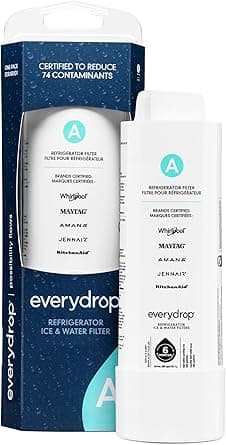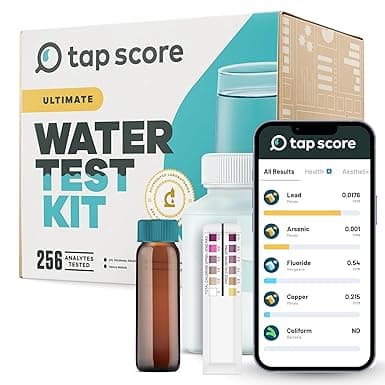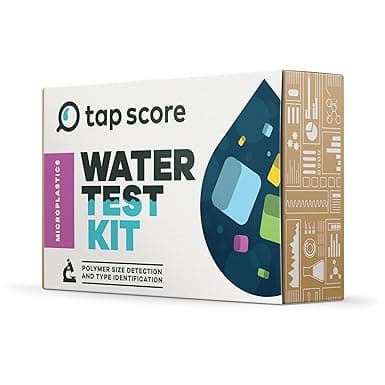Sidney Tap Water Quality Report
Sidney's water has 4 contaminants above EPA MCLGs. We recommend using a certified water filter.
Utility
SIDNEY WATER SYSTEM
People Served
3,800
MCL Violations
0
Last Updated
Dec 5, 2024
Is Sidney Tap Water Safe to Drink?
Sidney's water has 4 contaminants above EPA health-based guidelines. We strongly recommend using a certified water filter to reduce exposure to these contaminants. Check our filter recommendations below for NSF-certified options that can remove the specific contaminants found in Sidney's water.
The data below shows test results from SIDNEY WATER SYSTEM, which serves 3,800 people in the Sidney area. Water quality testing is conducted regularly and reported to the EPA. This report was last updated Dec 5, 2024.
Sidney Water Quality Test Results
Key Water Quality Metrics
Contaminants Detected
⚠️ Contaminants Above EPA MCLG (4)
Trichloroethylene
What is Trichloroethylene?
Solvent that is used primarily for metal degreasing applications, as an intermediate for the manufacture of other chemicals, as an industrial solvent, and in dry cleaning and textile operations. TCE is the most commonly reported organic contaminant in drinking water and is readily volatile, thus all routes of exposure (ingestion, inhalation and dermal) are relevant if one is exposed via drinking water. The EPA has deemed trichloroethylene as 'likely to be carcinogenic to humans' by all routes of exposure based on the association between TCE exposure and kidney cancer. At low concentrations, TCE can adversely impact the immune system and development outcomes.
Health Effects
Health protective levels for trichloroethylene in drinking water have been set by the EPA based on TCE's carcinogenicity (specifically kidney cancer). Both human and animal studies show that the immune system and fetal development are sensitive endpoints with respect to TCE exposure. Acute exposures unlikely encountered in drinking water can result in effects to the central nervous system, kidney, liver, and male reproductive system.
Affected Organs
Common Sources
Total THMs
What is Total THMs?
Group of contaminants that form in drinking water systems when a disinfectant, typically chlorine, reacts with organic matter
Health Effects
Drinking water standards for total THMs are based on evidence of carcinogenicity in human and animal studies, as well as liver and kidney toxicity observed in animal studies. Individual THMs have been further associated with developmental, immune, spleen, and genotoxicity.
Affected Organs
Common Sources
Manganese
What is Manganese?
Transition metal commonly found at low levels in soil, air, and water and in food as an essential nutrient
Health Effects
Manganese is an essential nutrient at low doses, however a number of reports indicate chronic exposure to high concentrations of manganese has been associated with toxicity to the nervous system. Children and infants, in particular, are at risk if exposed to high levels of manganese in tap water as it can lead to both developmental and neurological effects.
Affected Organs
Common Sources
Fluoride
What is Fluoride?
Naturally occurring mineral in the environment and an essential element of tooth enamel
Health Effects
Elevated levels of fluoride in drinking water can lead to dental fluorosis in children, which is the discoloration and molting away of tooth enamel. Evidence on low-dose, chronic exposure to fluoride is not definitive but has been indicated as having potential neurological impacts. Studies have clearly established that long-term exposure to high doses of fluoride, higher than typically found in US drinking water, can have adverse effects on skeletal tissue (bones and teeth), which may cause higher risk of bone fractures in seniors. Skeletal fluorosis is a debilitating condition caused by high fluoride exposure during bone development in children.
Affected Organs
Common Sources
Understanding the Data
This data comes from your local water utility testing. The bar charts compare detected levels against EPA's Maximum Contaminant Level Goal (MCLG). Contaminants above the MCLG are shown by default and may require filtration. All other tested contaminants are within safe levels and can be viewed by expanding the section above.
Recommended Water Filters for Sidney
Based on Sidney's water quality data, these NSF-certified filters are recommended to remove contaminants above EPA MCLGs.

Whirlpool Corporation
W11569861
NSF Certified:
Capacity
1001 gal
Filter Life
3 mo
Flow Rate
0.52 gpm
Removes 22 contaminants:
1,2 Dichlorobenzene, 1,2,4 Trichlorobenzene, 1,4 Dichlorobenzene, 2,4-D, Asbestos +17 more

iSpring Water Systems LLC
RCC7-BLK
NSF Certified:
Daily Production
25.41 gpd
Removes 9 contaminants:
Asbestos, Barium, Cadmium, Chromium (Total), Copper +4 more

iSpring Water Systems LLC
RCC7AK-BLK
NSF Certified:
Daily Production
25.41 gpd
Removes 9 contaminants:
Asbestos, Barium, Cadmium, Chromium (Total), Copper +4 more

iSpring Water Systems LLC
RCC7AK-UVBLK
NSF Certified:
Daily Production
25.41 gpd
Removes 9 contaminants:
Asbestos, Barium, Cadmium, Chromium (Total), Copper +4 more
Verify Your Water Quality with Independent Testing
With 4 contaminants above EPA health guidelines, independent laboratory testing provides a second opinion and can track changes over time.

SimpleLab
Advanced Home Water Test
$369
Most comprehensive home water test including all standard tests plus additional parameters for ultimate peace of mind.

SimpleLab
Standard Home Water Test
$232
Comprehensive water analysis testing over 200 contaminants including bacteria, heavy metals, and chemical compounds.

Tap Score
Advanced Microplastics Test
$636
Cutting-edge testing for microplastics particles in drinking water using advanced laboratory techniques.
Frequently Asked Questions About Sidney Tap Water
Sidney's water has 4 contaminants above EPA MCLGs. We strongly recommend using a certified water filter to reduce exposure to these contaminants. Check our filter recommendations below for NSF-certified options that can remove the specific contaminants found in Sidney's water.